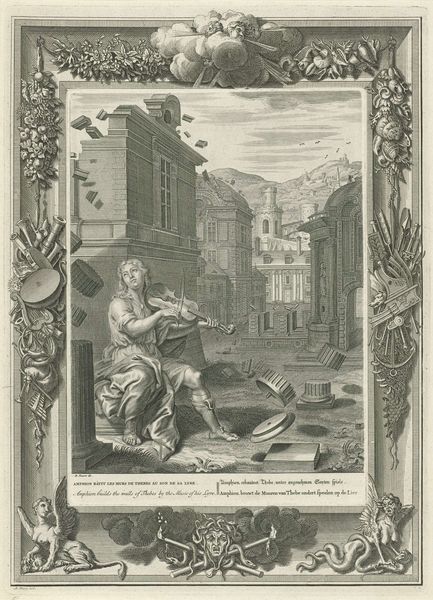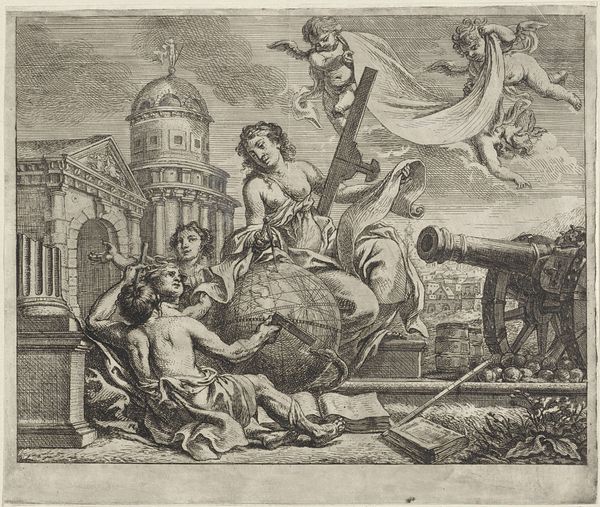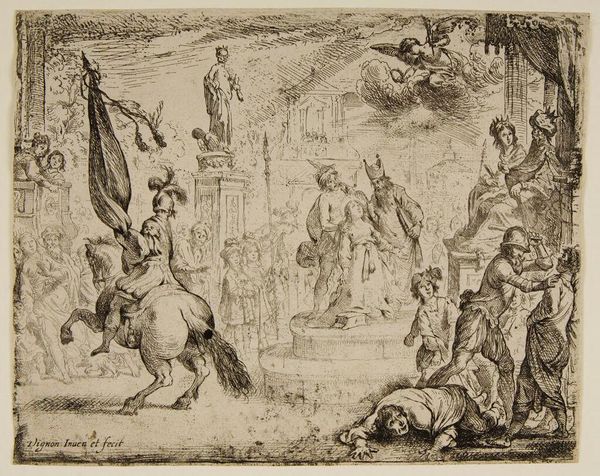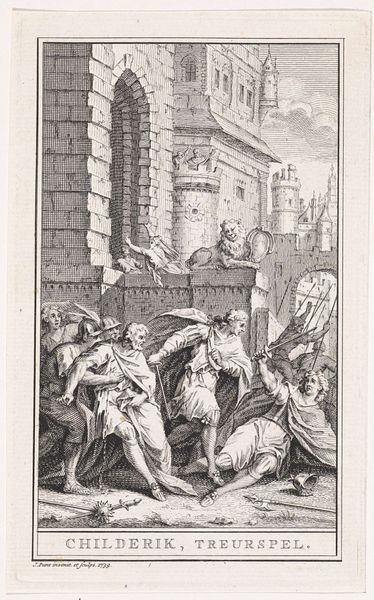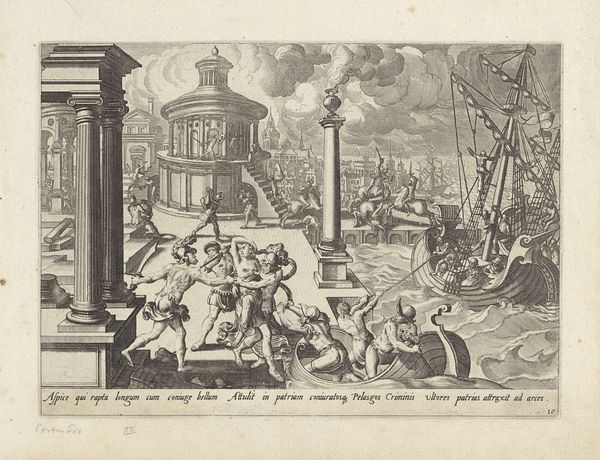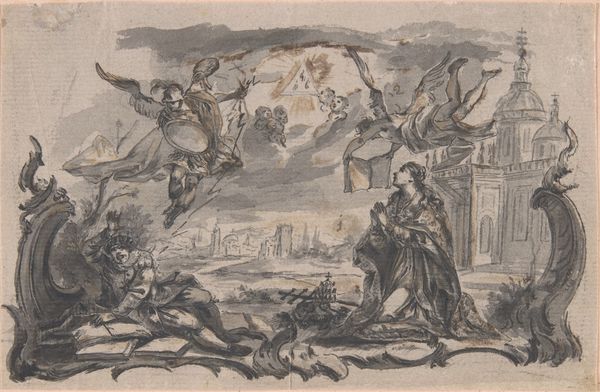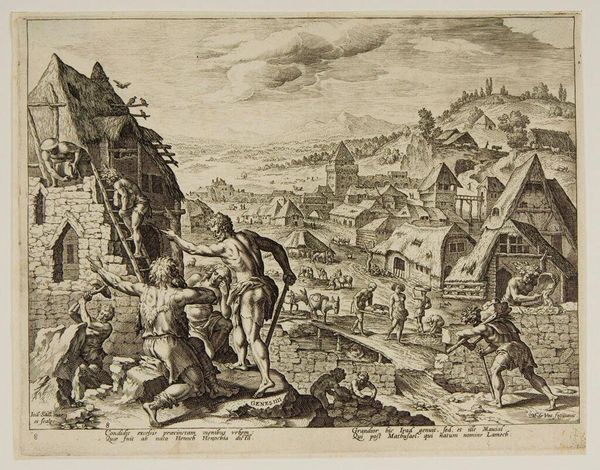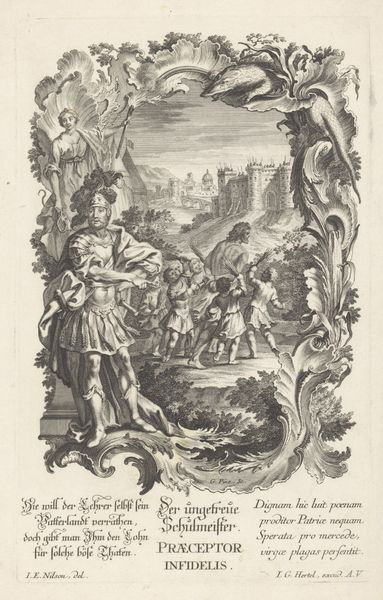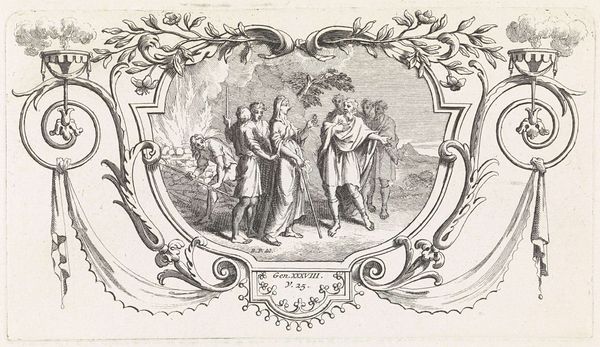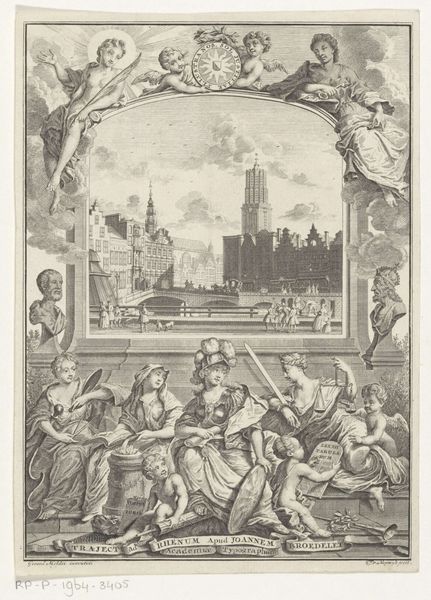
print, etching
#
baroque
# print
#
etching
#
genre-painting
#
history-painting
Dimensions: height 56 mm, width 111 mm
Copyright: Rijks Museum: Open Domain
Curator: This print, "Herodes de Grote en de kindermoord in Betlehem," or "Herod the Great and the Massacre of the Innocents in Bethlehem," was created in 1715 by Bernard Picart. It’s an etching. Editor: It’s brutally evocative. Even in the stylized baroque frame, the central image just screams devastation and arbitrary cruelty. Curator: The means of production here are important. Printmaking allowed for the wide dissemination of imagery and, by extension, ideology. Picart's skill lies in manipulating the etching technique to create varying tones, allowing the horror of the scene to resonate. Editor: Absolutely. And this resonates politically too. The massacre, a biblical story, is staged within the broader historical context of power and tyranny. Look at Herod himself—crowned, wielding a scepter, standing atop a pile of infants. The work reflects contemporary anxieties about power, gendered violence, and the vulnerability of the innocent. It uses the biblical story as a commentary. Curator: The materiality adds to the effect. Consider the paper it’s printed on, likely mass-produced at the time. A commentary on consumerism as well. Does making such horror widely available lessen or amplify its impact? Also note how the decorative frame of grotesque ornamentation contrasts so sharply with the visceral scene inside. Editor: It heightens the impact, doesn't it? The juxtaposition implicates the viewer. We are framed, made complicit in this historical moment. It invites us to question our own relationship to such atrocities, past and present, by highlighting issues such as religious power and control and how these affect marginalized groups, such as young children. Curator: And who was commissioning and buying such prints? Wealthy individuals looking for moral instruction? Or simply for objects of status to show their elevated, cultured sensibilities? Editor: The intended audience shapes the interpretation. Perhaps the prints functioned as reminders, then and now, of our ongoing struggle against unchecked authority and indiscriminate violence—and those most at risk. Curator: Thinking about the physical process of creating these dark, detailed lines etched into a metal plate, and their distribution to the public, really grounds this piece. Editor: Indeed, bringing historical violence into our contemporary moment and addressing the legacies it creates highlights the continuing need for ethical action in the present.
Comments
No comments
Be the first to comment and join the conversation on the ultimate creative platform.
